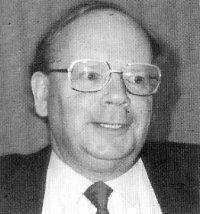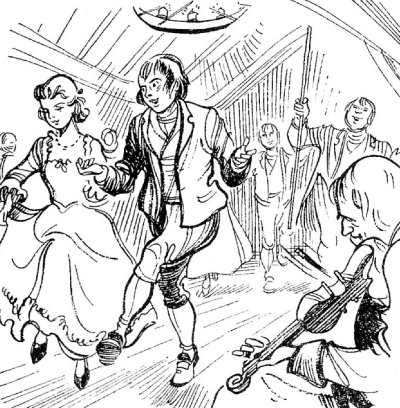Edited by Frank R. Shaw, FSA Scot, Atlanta, GA, USA
One of the great pleasures of editing Robert Burns
Lives! is the opportunity to meet people throughout the global
Scottish community who love Robert Burns. In this issue, you will
hear from Peter Westwood, Castle Douglas, Scotland, the
distinguished Editor of the Burns Chronicle and author of
several books. Peter has taken time from finishing a new set of
books on Burns to furnish this article for our readers. It is
extremely rare that an author working on his or her next book will
stop to provide an article for Robert Burns Lives! In the
next issue, David Smith, Hon. Secretary of the Burns Howf
Club, will present our guest column. The Howf Club is located in the
building that houses The Globe Inn that was frequented by Burns.
David has been Hon. Secretary of the Club for 30 years! Gladly do we
sit at the feet of these men to learn more about Robert Burns. I
deeply appreciate the contributions they make to this column that
now receives as many emails as the book reviews or the “Chats” with
authors.
Robert Burns – Country Dancer
By Peter J. Westwood, Editor,
Burns Chronicle

Over the years many questions have been asked about
the social life of Scotland’s National Bard, Robert Burns. It is a
well-known fact that he was socially popular even as a teenager and
country dancing was early on his list of social activities to the
extent that he defied the wishes of his father by joining a local
country dancing class. In his autobiographical letter to Dr. Moore,
he stated: “In my 17th year, to
give my manners a brush, I went to a country dancing school. My
father had an unaccountable antipathy against these meetings; and my
doing was, what to this hour I spent, in absolute defiance of his
commands.”
His
brother Gilbert was later to say, “Robert excelled in dancing,
and was for some time distractedly fond of it”. It was
at a dance during April 1785 that Burns first met Jean Armour who
was eventually to become his wife.
Many
stories have been repeated over the years about what the Poet may or
may not have said or been responsible for. One story on the subject
of dancing which originated from one of the Poet’s schoolmates,
William Niven, goes as follows:
A
week before a local fair, Robert suggested to his friend William
that they should organise a dance on the evening prior to the fair,
and hold it in one of the public houses in the village and invite
their girlfriends to come along. William consented and it was
agreed that some other young men should be asked to join in on this
undertaking.
The
dance took place as planned, music being supplied by a hired band
(probably a local fiddler) and a dozen couples took part. At the
close of the dance they found that the cost of running the evening
amounted to eighteen shillings and fourpence. Unfortunately, hardly
any of those attending had any money, except William, who possessed
about two shillings and sixpence. However the problem was
eventually solved when William agreed to find the money to pay for
the dance. He did this by selling stationery to the school which he
acquired from his father’s warehouse in Maybole. He also sold pens
and paper to his friends. It is not known whether or not these items
were acquired officially!

Sketch by John
Mackay
Words associated with the many forms of dancing and singing crop up
from time to time, not only in the many songs and poems of Robert
Burns, but also in his correspondence, particularly in his letters
to James Johnston (Scots Musical Museum) and to George
Thomson (Select Scottish Airs).
More
than anyone else Burns was responsible for the survival of hundreds
of Scottish tunes including those used for dancing, many of them
still in vogue today. Verses from the Poet’s tale, “Tam o’Shanter”
and his song “The Deil’s awa wi th’ Exciseman” provide excellent
examples on the theme of dancing.
“Warlocks and
witches in a dance:
Nae Cotillion, brent new frae France,
But hornpipes, jigs, strathspeys, and reels,
Put life and mettle in their heels.”
“There’s
threesome reels, there’s foursome reels,
There’s hornpipes and strathspeys, man,
But the ae best dance e’er cam to the land
Was the Deil’s awa wi th’ Exciseman”.
The
Poet’s love of dancing was largely due to his fondness of the lasses
and this can be seen in a number of his songs. In his “Bonnie
Jean” he remarks:
“He gaed wi
Jeanie to the Tryste (Cattle-Fair)
He danc’d wi Jeanie on the down,
And, lang ere witless Jeanie wist,
Her heart was tint, her peace was stown!”
The
subject of the song was not his wife Jean, but Jean McMurdo,
daughter of the Chamberlain of Drumlanrig Castle. In his “Fragment
on Maria” he pays compliment to Maria Riddell, who could
possibly have been a dancing partner:
“How gracefully
Maria leads the dance!
She’s life itself; I never saw a foot
So nimble and so elegant. It speaks
And the sweet whispering Poetry it makes
Shames the musician.”
During the Poet’s tour of the Highlands in 1787 he met Niel Gow, the
famous fiddler, equally well known in Scots song and dance. The
Poet’s song “Amang the Trees” was intended as a compliment to
Niel:
“Amang the trees,
where humming bees
At buds and flowers were hinging, O,
Auld Caledon drew out her drone,
And to her pipe was singing, O.
‘Twas pibroch, sang, strathspeys and reels
She dirl’d them aff fu clearly, O,
When there cam a yell o freign squeels,
That dang her tapsalteerie, O!”
My
final quotation comes appropriately from “The Ploughman”
which is a typical example of Burn’s reworking of a traditional
song:
“I hae been east,
I hae been west,
I hae been at Saint Johnston, (Perth)
The boniest sight that er’e I saw
Was th’ ploughman laddie dancin’.
Snaw-white stockins on his legs,
And siller buckles glancing;
A gude blue bonnet on his head,
And O but he was handsome!”
Let
George Thomson have the final words:
“Mr.
Burns, whose enthusiasm for Caledonian Music and Song, was only
equaled by his poetical talents, no sooner heard of the Editor’s
plan, than he signified his warm approbation of it, and in the most
liberal and cordial manner undertook to contribute every aid in his
power for rendering the Collection as complete as possible. He has
performed what he promised in a manner that transcends the sanguine
expectations formed by the Editor, having enriched the Work with the
most exquisite Songs, both Scottish and English, that exist in any
language; they exhibit all the charms of the Poet’s genius in the
utmost variety both of serious and humorous composition; and every
intelligent reader will contemplate his luxuriant fancy, his ardent
feeling, and manly sentiment, and the impressive energy and
simplicity of his style, with equal wonder and delight. All his
tender and impassioned Songs breathe the genuine, glowing,
unaffected language of the heart; while the scenes, the manners, the
innocence, and the pleasures of rural life, are portrayed with a
pencil so true to nature, as to engage our warmest sympathies and
admiration.” (1/6/2004) |

